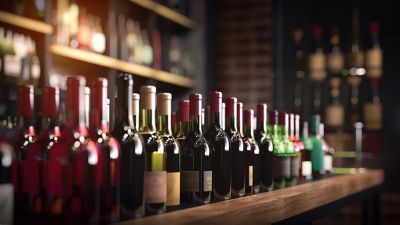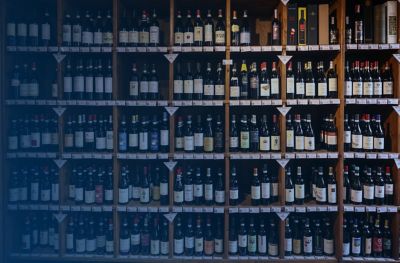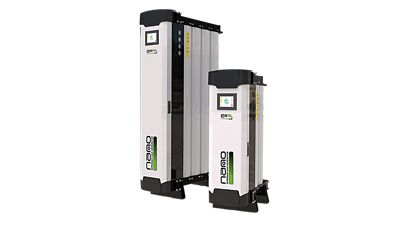In the sun-soaked vineyards and cellars of the wine industry, a silent revolution is unfolding – one that holds the potential to reshape the financial landscape of wineries, elevate profit margins, and propel the industry toward a more sustainable and prosperous future. At the heart of this transformation lies the innovative technology of on-site nitrogen generation, a game-changer that promises not only to enhance the quality of wines but also to uncork new avenues of profit.

The Cost of Nitrogen Supply
In such an intricate process like wine production, nitrogen plays a crucial role as a guardian of flavor and quality. Traditionally, wineries have relied on external suppliers to provide nitrogen in the form of compressed gas cylinders. However, this reliance on external sources comes at a cost – not just in monetary terms, but also in terms of operational efficiency and sustainability.
External nitrogen supply involves transportation, storage, and handling costs. These expenses can accumulate, especially for wineries with substantial production volumes. The logistics of managing nitrogen cylinders, including scheduling deliveries and managing inventory, can also divert valuable resources away from core wine-making activities.
Moreover, the carbon footprint associated with transporting nitrogen cylinders aligns poorly with the growing consumer demand for sustainable products. As the industry pivots toward environmental responsibility, the financial repercussions of a high carbon footprint can extend beyond immediate operational costs to impact brand reputation and market positioning.
The On-Site Advantage: Profit in Autonomy
On-site nitrogen generation presents a compelling solution to these financial challenges. By producing nitrogen directly at the winery, the need for external nitrogen supply is mitigated, if not eliminated entirely. This shift towards on-site production has a cascading effect on operational efficiency and cost optimization.
Reduced Operating Costs: On-site nitrogen generation eliminates transportation and delivery expenses. There's no longer a need to coordinate cylinder deliveries or manage inventory, freeing up resources that can be reinvested in core winemaking activities. Over time, these reduced operating costs can lead to significant savings.
Operational Autonomy: Wineries gain a new level of operational independence. They are no longer at the mercy of external suppliers' schedules or potential disruptions in supply. The ability to produce nitrogen on demand ensures a seamless production process, enhancing efficiency and minimizing potential downtime.
Sustainability Dividends: Beyond the immediate financial gains, on-site nitrogen generation aligns with the wine industry's push for sustainability. This alignment can lead to enhanced brand reputation and resonate with environmentally-conscious consumers, potentially expanding market reach and boosting sales.
Quality Enhancement: The use of on-site nitrogen for various winemaking processes, such as purging, blanketing, and bottling, enhances the quality and consistency of the final product. This can lead to higher customer satisfaction, repeat business, and positive word-of-mouth recommendations – all factors that contribute to increased profitability.
Embracing Innovation: On-site nitrogen generation facilitates innovative packaging methods, such as nitrogen-sealed bottles. This not only adds an element of visual appeal but also contributes to the preservation of the wine's flavor and aroma, enhancing the perceived value of the product.
The Bottom Line: Profitability and Beyond
While the financial gains from on-site nitrogen generation are evident, it's important to recognize that profit in the wine industry extends beyond immediate monetary benefits. On-site nitrogen generation serves as a catalyst for a holistic approach to profitability, touching upon multiple dimensions of business success:
Cost Efficiency: The reduction in operating costs translates directly into improved profit margins. As wineries optimize their expenditure on nitrogen supply, they free up resources that can be reinvested in research, marketing, and product development.
Operational Excellence: The autonomy and efficiency gained through on-site nitrogen generation enhance overall operational excellence. This can lead to streamlined processes, quicker response times, and ultimately, increased customer satisfaction.
Market Differentiation: The alignment with sustainable practices and innovative packaging methods can differentiate wineries in a crowded market. A distinct brand identity attracts consumers and can justify premium pricing, further contributing to profitability.
Long-Term Viability: Sustainability and financial viability go hand in hand. On-site nitrogen generation reflects a forward-thinking approach that ensures a winery's long-term resilience in an industry marked by evolving consumer preferences and environmental considerations.
Investment in Quality: Ultimately, the overarching goal of on-site nitrogen generation is to enhance the quality of wines. Improved quality leads to loyal customers, positive reviews, and a strong market presence – all of which are fundamental drivers of sustained profitability.
In the vast market of modern winemaking, on-site nitrogen generation emerges as a wave of financial opportunity. It's a harmonious blend of technology, sustainability, and quality enhancement, all of which contribute to the bottom line. As the wine industry raises a toast to innovation and profitability, the transformative influence of on-site nitrogen generation takes center stage, uncorking a world of potential that stretches from the vineyard to the marketplace and beyond.




